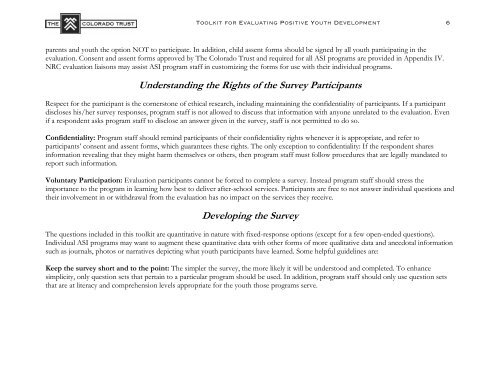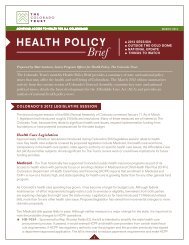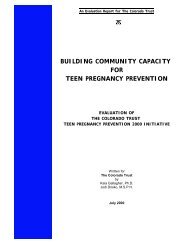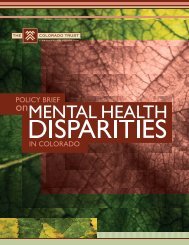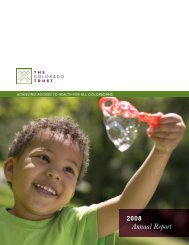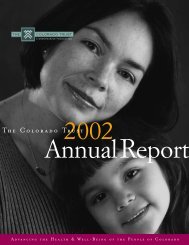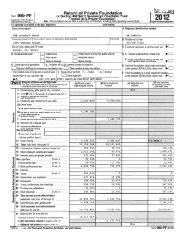After-School Initiative's Toolkit for Evaluating
After-School Initiative's Toolkit for Evaluating
After-School Initiative's Toolkit for Evaluating
Create successful ePaper yourself
Turn your PDF publications into a flip-book with our unique Google optimized e-Paper software.
<strong>Toolkit</strong> <strong>for</strong> <strong>Evaluating</strong> Positive Youth Development 6<br />
parents and youth the option NOT to participate. In addition, child assent <strong>for</strong>ms should be signed by all youth participating in the<br />
evaluation. Consent and assent <strong>for</strong>ms approved by The Colorado Trust and required <strong>for</strong> all ASI programs are provided in Appendix IV.<br />
NRC evaluation liaisons may assist ASI program staff in customizing the <strong>for</strong>ms <strong>for</strong> use with their individual programs.<br />
Understanding the Rights of the Survey Participants<br />
Respect <strong>for</strong> the participant is the cornerstone of ethical research, including maintaining the confidentiality of participants. If a participant<br />
discloses his/her survey responses, program staff is not allowed to discuss that in<strong>for</strong>mation with anyone unrelated to the evaluation. Even<br />
if a respondent asks program staff to disclose an answer given in the survey, staff is not permitted to do so.<br />
Confidentiality: Program staff should remind participants of their confidentiality rights whenever it is appropriate, and refer to<br />
participants’ consent and assent <strong>for</strong>ms, which guarantees these rights. The only exception to confidentiality: If the respondent shares<br />
in<strong>for</strong>mation revealing that they might harm themselves or others, then program staff must follow procedures that are legally mandated to<br />
report such in<strong>for</strong>mation.<br />
Voluntary Participation: Evaluation participants cannot be <strong>for</strong>ced to complete a survey. Instead program staff should stress the<br />
importance to the program in learning how best to deliver after-school services. Participants are free to not answer individual questions and<br />
their involvement in or withdrawal from the evaluation has no impact on the services they receive.<br />
Developing the Survey<br />
The questions included in this toolkit are quantitative in nature with fixed-response options (except <strong>for</strong> a few open-ended questions).<br />
Individual ASI programs may want to augment these quantitative data with other <strong>for</strong>ms of more qualitative data and anecdotal in<strong>for</strong>mation<br />
such as journals, photos or narratives depicting what youth participants have learned. Some helpful guidelines are:<br />
Keep the survey short and to the point: The simpler the survey, the more likely it will be understood and completed. To enhance<br />
simplicity, only question sets that pertain to a particular program should be used. In addition, program staff should only use question sets<br />
that are at literacy and comprehension levels appropriate <strong>for</strong> the youth those programs serve.


